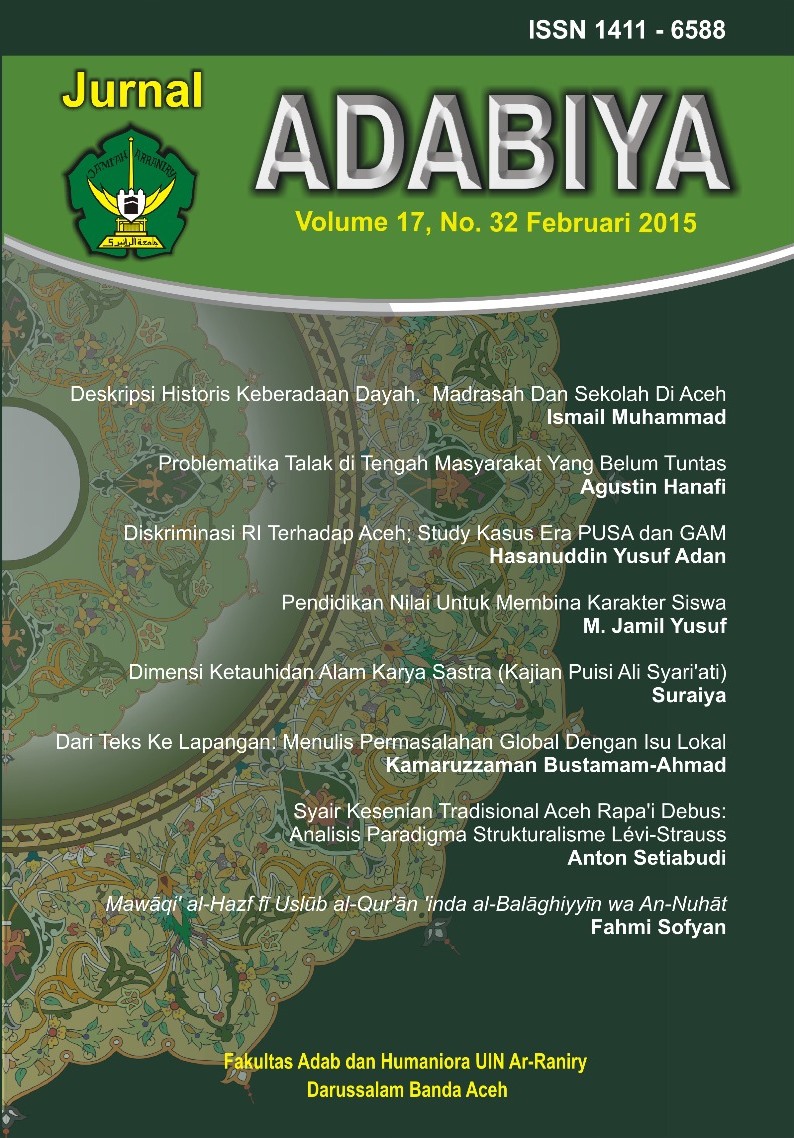References
Agung Budi Wibowo, dkk, Sepuluh Tahun Balai Kajian Sejarah dan Nilai Tradisional Banda Aceh: Kebangkitan Pascagempa dan Tsunami, Banda Aceh: Balai Kajian Sejarah dan Nilai Tradisional Banda Aceh, 2006.
Apridar, Tsunami Aceh: Adzab atau Bencana, Jakarta: Pustaka Al-Kautsar, 2005.
Badan Arsip dan Perpustakaan Aceh, Rencana Kerja (Renja) Badan Arsip dan Perpustakaan Provinsi NAD tahun 2010, Banda Aceh: Badan Arsip dan Perpustakaan Provinsi NAD, 2009.
Badan Nasional Penanggulangan Bencana, Peraturan Kepala Badan Nasional Penanggulangan Bencana No. 17 Tahun 2010 tentang Pedoman Penyelenggaraan Umum Rehabilitasi dan Rekonstruksi Pascabencana, 2010.
Erni Jasmita, “Pemulihan Pasca Bencana”, dalam http://erni-jasmita.blogspot.com/2014/01/pemulihan-pasca-bencana.html. Akses tanggal 22 Desember 2014.
Hasil Wawancara Bapak Arkian, S.Sos, Selaku Kepala Bidang Pelayanan dan Teknologi Badan Arsip Perpustakaan Aceh, tanggal 23 Desember 2014.
P. Cahanar, Bencana Gempa dan Tsunami Nanggroe Aceh Darussalam dan Sumatera, Jakarta: Kompas Media Nusantara, 2005.
Sitepu, A. (Vol. 3, No. 1., Tahun 2009). Kesiapsiagaan dalam Mengantisipasi Bencanadi Perpustakaan Pusat dan Arsip. BACA, 1-13.
Sutarno NS, Perpustakaan dan Masyarakat, Jakarta: Yayasan Obor Indonesia, 2003.
Sulistyo-Basuki, Pengantar Ilmu Perpustakaan, Gramedia Pustaka Utama, Jakarta: 1991.
Wisnu Widjaja, Manajemen Rehabilitasi dan Rekonstruksi Pasca Bencana, Banda Aceh; BNBP, 2008.
__________, “Sasaran Subtansi Rehabilitasi dan Rekonstruksi”, Paper dipresentasikan di acara Pelatihan Rehabilitasi dan Rekonstruksi Pascabencana, Surabaya: April 2013.



